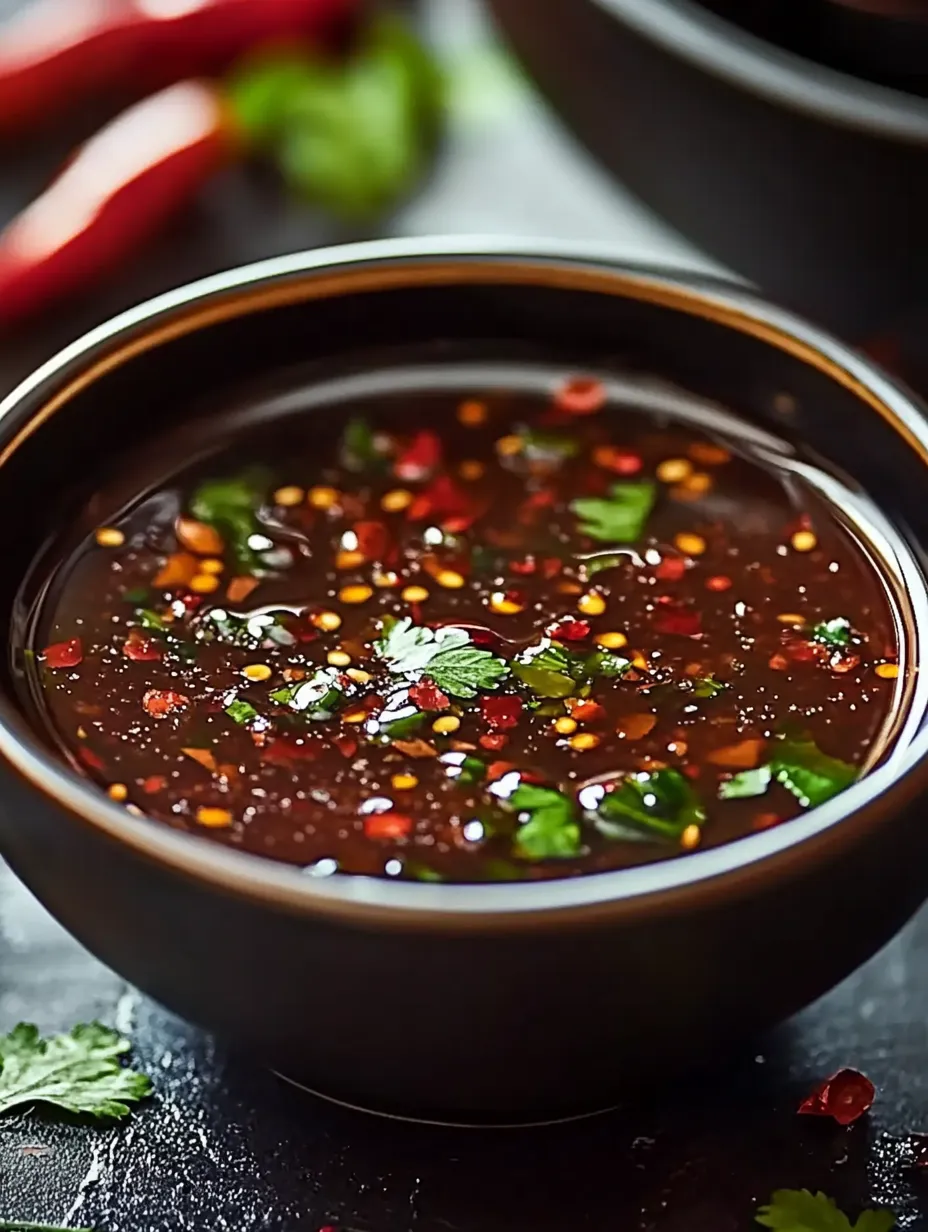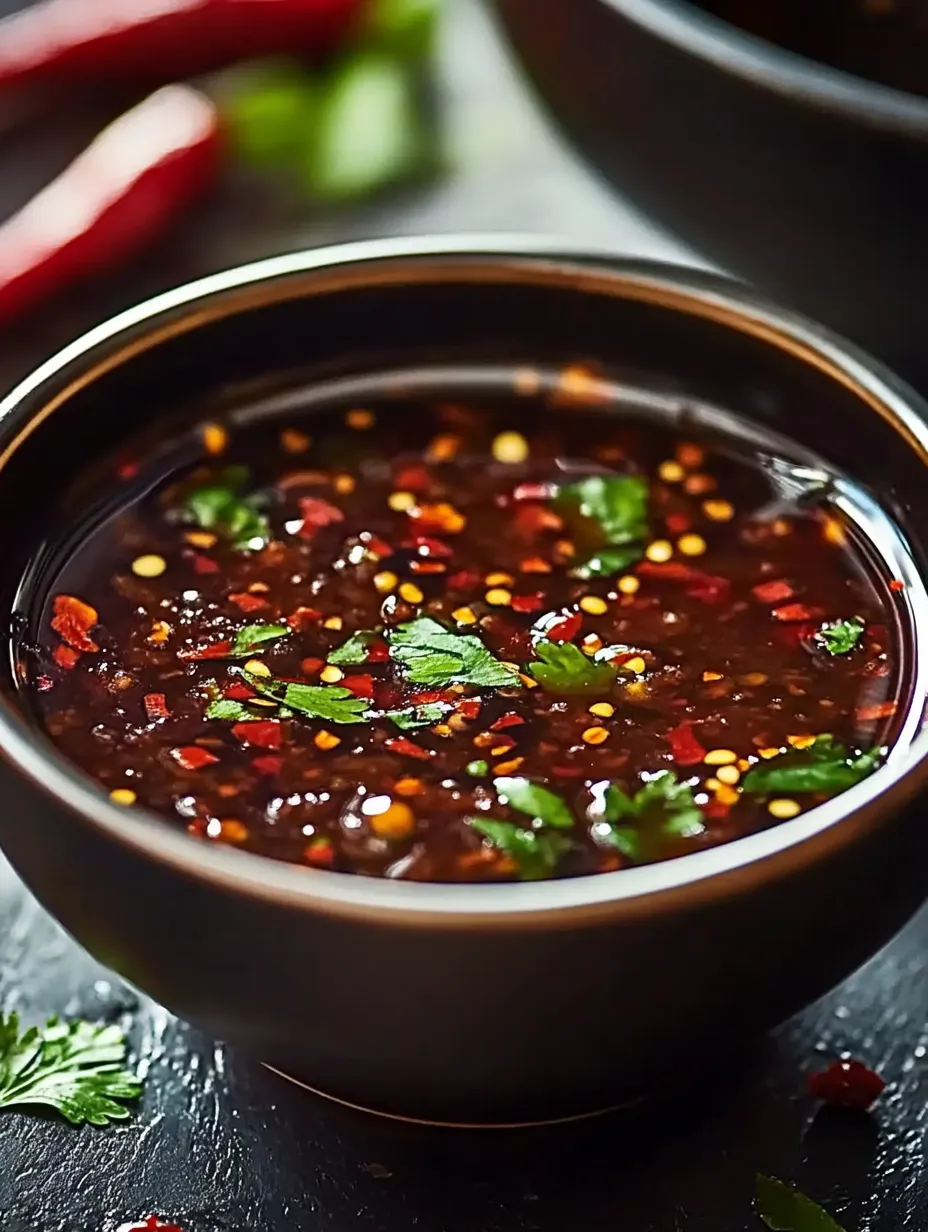 Pin it
Pin it
Dragon Sauce transforms ordinary meals into memorable culinary experiences with its perfect balance of heat, tang, and subtle sweetness. This versatile Asian-inspired condiment packs a flavor punch that enhances everything from grilled meats to roasted vegetables. The magic lies in its harmonious blend of umami-rich soy sauce, aromatic garlic, and fiery chili elements that create layers of complexity with each taste.
I discovered this sauce recipe during a particularly disappointing takeout experience when the restaurant's signature spicy sauce fell flat. Determined to create something better at home, I played with combinations until landing on this version. My first batch disappeared alarmingly quickly - my husband started putting it on practically everything from eggs to sandwiches. Even my heat-cautious mother-in-law requested the recipe after trying it drizzled over roasted brussels sprouts.
Essential Ingredients
- Soy Sauce: Forms the umami-rich foundation of the sauce. Choose low-sodium versions if you're watching salt intake, but traditional varieties provide deeper color and flavor. The natural fermentation in good soy sauce brings complexity that can't be replicated.
- Honey: Provides natural sweetness that balances the heat while adding body to the sauce. Local honey brings subtle floral notes that commercial varieties might lack. The thickness also helps the sauce cling beautifully to foods.
- Rice Vinegar: Delivers bright acidity that cuts through richness and amplifies other flavors. Unseasoned rice vinegar works best here, allowing you to control sweetness separately. Its mild character won't overwhelm like stronger vinegars would.
- Fresh Garlic: Creates aromatic depth impossible to achieve with powdered alternatives. Crush cloves rather than mincing for more intense infusion. Fresh garlic provides both immediate punch and mellow background notes as it cooks.
- Sriracha Sauce: Contributes consistent heat and its distinctive fermented chili profile. Look for versions without artificial preservatives for cleaner flavor. The slight thickness of sriracha also helps achieve proper sauce consistency.
- Chili Paste: Adds complex spice and richness that single-note hot sauces can't deliver. Sambal oelek or gochujang work particularly well here. This component brings depth and authenticity that elevates the entire sauce.
- Sesame Oil: Introduces nutty, toasted notes that round out all other flavors. A little goes a long way, so measure carefully. The aromatic qualities transform the sauce from simply spicy to genuinely craveable.
 Pin it
Pin it
Step-by-Step Cooking Instructions
- Prepare Your Workspace:
- Before diving in, gather all ingredients and measuring tools for efficiency. Crushing garlic and measuring accurately ensures balanced flavor without constant adjustments later. Taking this preparatory step creates a smooth cooking experience, particularly important for quick-cooking sauces that can easily overreduce if you're searching for ingredients midway through.
- Combine Base Ingredients:
- In a small, heavy-bottomed saucepan, measure and add 1/2 cup soy sauce, 3 tablespoons honey, 2 tablespoons rice vinegar, 3 crushed garlic cloves, 1 tablespoon sriracha, 2 teaspoons chili paste, and 1 teaspoon sesame oil. Whisk thoroughly to incorporate the honey, which tends to sink and stick to the bottom. This initial mixing is crucial for even flavor distribution before heat changes ingredient characteristics.
- Heat Gradually:
- Place the saucepan over medium-low heat rather than rushing with high heat. Gentle warming allows the garlic to infuse properly without risking burnt flavors or broken emulsion. Watch for tiny bubbles forming around the edges, which indicate it's approaching proper temperature without boiling violently. This controlled simmering develops flavor complexity while gradually thickening the sauce through moisture evaporation.
- Simmer Strategically:
- Once the mixture begins to simmer, reduce heat slightly and maintain a gentle bubble for 5-7 minutes. Stir occasionally, paying special attention to the bottom edges where reduction happens fastest. This controlled simmering develops flavor complexity while gradually thickening the sauce through moisture evaporation.
- Monitor Consistency Development:
- Watch for the sauce to coat the back of a spoon with a thin but definite layer that doesn't immediately run off. The sauce will continue thickening as it cools, so stop cooking just before it reaches your desired final thickness. This timing prevents ending up with an overly reduced, too-concentrated result.
- Cooling Consideration:
- Remove from heat and allow the sauce to cool in the pan for 10 minutes before transferring to a container. This resting period allows flavors to marry while gently continuing the cooking process of the garlic. The sauce's character will noticeably change during this time as ingredients fully integrate.
- Final Adjustment:
- Once slightly cooled but still warm, taste and make final adjustments to suit your preference. Add honey for sweetness, vinegar for brightness, or additional chili components for heat. These late adjustments allow fine-tuning without risking over-reduction during extended cooking time.
Sesame oil transformed this sauce from good to unforgettable in my kitchen experiments. That first time adding the golden, aromatic oil completely changed the character - suddenly the sauce had depth that lingered pleasantly rather than just delivering heat and disappearing. My family noticed immediately, with my daughter commenting that it tasted 'like restaurant food but better.' I've found that toasted varieties offer even more pronounced nuttiness than regular sesame oil, though using more than a teaspoon can quickly overwhelm the other flavors.
Versatile Applications
Dragon sauce shines in multiple culinary contexts, proving its worth as a kitchen staple. For weeknight dinners, toss it with shredded rotisserie chicken and vegetables for instant flavor transformation. Just a tablespoon stirred into plain rice creates a satisfying side dish in seconds. Its thick consistency makes it perfect for meat marinades, where it adheres beautifully while creating a gorgeous caramelized exterior during cooking. For vegetable pairings, cruciferous options like broccoli and cauliflower stand up well to the sauce's intensity, while their slight bitterness creates pleasant contrast with the sweet and spicy elements.
Storage Solutions
Properly stored, this sauce maintains full flavor profile for impressive periods. Transfer cooled sauce to a clean glass jar with tight-fitting lid for best flavor preservation. Refrigerated, it maintains full flavor profile for up to two weeks, though the garlic intensity may mellow slightly after the first week. For longer storage, freeze in ice cube trays for convenient portion control, then transfer frozen cubes to freezer bags where they'll keep for up to three months.
Perfect Pairings
The bold character of dragon sauce makes it especially compatible with certain ingredients. Proteins with mild flavors like chicken, tofu, and white fish provide perfect canvases for the sauce to shine. Nutty grains including brown rice and quinoa complement the sesame notes beautifully. For vegetable pairings, cruciferous options like broccoli and cauliflower stand up well to the sauce's intensity, while their slight bitterness creates pleasant contrast with the sweet and spicy elements. For vegetarian pairings, consider using it as a marinade for firm tofu or tempeh, where it adheres beautifully while creating a gorgeous caramelized exterior during cooking.
Creative Variations
The base recipe welcomes thoughtful modifications to create signature versions. Adding finely grated ginger introduces bright, zingy notes perfect for seafood applications. Incorporating citrus zest—particularly orange or lime—creates a fragrant variation that works beautifully with poultry. For a richer profile, substitute brown sugar for honey and add a splash of bourbon during the simmering stage, creating a more complex sauce ideal for red meat. These thoughtful variations maintain the essence of the original recipe while providing exciting new flavor profiles that adapt to various culinary contexts.
 Pin it
Pin it
Dietary Adaptations
This sauce easily accommodates various dietary needs without sacrificing flavor. For gluten-free versions, substitute tamari for traditional soy sauce made from wheat. Vegan adaptations work beautifully by replacing honey with maple syrup or agave nectar. For those watching sodium, reduce the soy sauce and add a splash of water to maintain proper consistency. These simple adjustments ensure everyone at your table can enjoy the core experience of this sauce regardless of dietary restrictions.
After years of sauce experimentation, this Dragon sauce has earned permanent status in my refrigerator. What began as an attempt to improve disappointing takeout has become something friends request for holidays and family consistently expects at gatherings. There's something deeply satisfying about creating a condiment that transforms everyday ingredients into something extraordinary. The beauty lies in its simplicity—just a few minutes of effort yields something far more complex and satisfying than anything commercially produced, proving again that small kitchen efforts often bring the most significant culinary rewards.
Frequently Asked Questions
- → How spicy is this Dragon Sauce?
- The spice level is moderate with 1 tablespoon of sriracha, providing a nice kick without being overwhelming. You can easily adjust by adding more sriracha for extra heat or reducing the amount for a milder version that still maintains the signature flavor.
- → Can I make this sauce ahead of time?
- Yes, this sauce keeps very well. Store it in an airtight container in the refrigerator for up to one week. It may thicken slightly when chilled, so you can thin it with a teaspoon of water if needed when reheating.
- → What dishes pair well with Dragon Sauce?
- This versatile sauce works wonderfully with stir-fried vegetables, grilled chicken, beef, pork, or salmon. It's excellent drizzled over rice bowls, used as a dipping sauce for spring rolls or dumplings, or as a marinade for tofu. It also makes a great glaze for roasted vegetables.
- → Can I make this sauce gluten-free?
- Yes, simply substitute regular soy sauce with tamari or certified gluten-free soy sauce. All other ingredients are naturally gluten-free, making this an easy adaptation without sacrificing flavor.
- → What can I substitute for rice vinegar?
- If you don't have rice vinegar, apple cider vinegar or white wine vinegar can work as substitutes. They'll provide the necessary acidity, though the flavor profile will be slightly different. For a closer match, add a pinch of sugar to apple cider vinegar.
